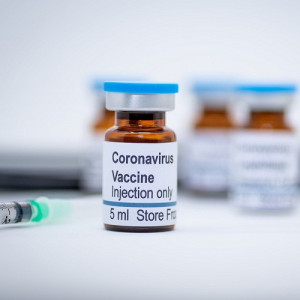| Novavax, Inc. |

| Registration Date | 17 Mar 2020 |
| Revision Date | 17 Mar 2020 |
| Share |
Medicine Pharmaceuticals
COVID-19 vaccineProtein
Nanoparticle /NanopowderNovavax’ patented saponin-based Matrix-M adjuvant has demonstrated a potent and well-tolerated effect by stimulating the entry of antigen-presenting cells into the injection site and enhancing antigen presentation in local lymph nodes, boosting immune responses.
Novavax is developing a novel vaccine to protect against coronavirus disease COVID-19. Novavax has produced and is currently assessing multiple nanoparticle vaccine candidates in animal models prior to identifying an optimal candidate for human testing, which is expected to begin by the end of spring 2020.
Novavax created the COVID-19 vaccine candidates using its proprietary recombinant protein nanoparticle technology platform to generate antigens derived from the coronavirus spike (S) protein. Novavax expects to utilize its proprietary Matrix-M™ adjuvant with its COVID-19 vaccine candidate to enhance immune responses.
Novavax has a proven track record of rapid innovative vaccine development against novel emerging viruses, including efforts to develop vaccines against previous coronaviruses, Middle East Respiratory Syndrome (MERS-CoV), and Severe Acute Respiratory Syndrome (SARS). In both cases, Novavax’ candidate vaccines demonstrated strong immunogenicity and 100% protection against virus challenge in preclinical testing. Novavax also developed a safe and clinically immogenetic Ebola vaccine candidate that proved effective in primate studies.
Matrix-M™ is Novavax’ next-generation, patented saponin-based adjuvant, powered by a new formulation that provides a potent adjuvant effect and is well-tolerated. Saponins are steroid or triterpenoid glycosides, which occur in many plant species. In Matrix-M, purified saponin fractions are mixed with synthetic cholesterol and a phospholipid to form stable particles than can be readily formulated with a variety of vaccine antigens. Saponin-based adjuvants act in part by stimulating the entry of antigen-presenting cells into the injection site and enhancing antigen presentation in the local lymph nodes. Thus, Matrix-M™ induces both a cell-mediated and an antibody mediated immune response, which we expect will be important in developing future vaccines. Matrix-M™ also increases the opportunity for an immune reaction with longer duration, which can reduce the number of vaccinations needed to gain optimal protection.
Our past experience with saponin-based adjuvants in both animals and humans indicates that, like all adjuvants, they increase the local reaction at the injection site. However, local reactions are transient and there is no evidence of longer-term systemic toxicity. Saponin-based adjuvants have the ability to stimulate cell-mediated immunity as well as to enhance antibody production; and importantly, when facing rapidly-emerging diseases like Ebola virus disease or pandemic influenza, they can allow immune responses to be achieved with much lower doses of antigen. This translates into the ability to deliver more doses per unit time.
In the preclinical evaluation/regulatory stage